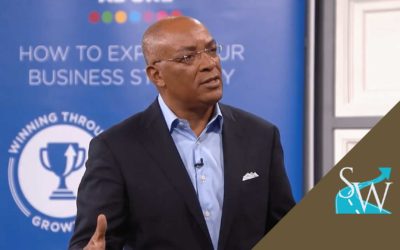A recent study surveyed public companies for nearly twenty years and revealed that only 19 percent of all CEOs remained in their position for ten or more years.
Besides the internal competencies that are required to do the job well, so many external factors affect your ability to sustain a leadership role over the long haul. I was blessed to have enjoyed eleven years at this level because I had terrific people surrounding me.
If you’re passionate about leading and motivating others, and you’ve made it to the C-suite or a senior-level position by exceeding expectations and committing to a service mentality with the colleagues in your sphere, the question becomes:
“How do CEOs stay in their post long enough to set a positive course for their companies?”
In my three-part series about leading in the C-suite, I explore my views on getting there, staying there, and leaving there. I discussed the mindset and behaviors that are necessary for getting there in the first installment. Here’s an excerpt from my LinkedIn Live chat on the topic too:
Staying in the CEO position long enough to accomplish my goals required a different mindset. In other words, I not only continued to apply what got me there, but it was necessary to expand on my approach in the following ways:
Success by association
Up until the point at which you’ve been hired in the C-Suite, your job number one is getting noticed by serving those around you. Now that you’re in the leadership role, your focus becomes achieving—and sustaining—results through everyone around you. When you complete a 360-degree scan, are you working in harmony with your boss, peers, and team?
Does everyone work in a way that’s a natural extension of your collective goals and values? I’m sure you’ve heard the phrase “guilt by association.” Similarly, “success by association” means an outsider could easily identify your team members as part of a specific goal or initiative simply by their bearing or verbal communication. That’s because you’ve sought alignment through hiring practices, clarity about goals, and removing barriers to performance.
Leverage your unique value
Know what your value proposition is; ask yourself if your behavior at work aligns with your purpose, and understand how to nurture a performance culture.
By now, you’ve begun to recognize what you bring to the table if you’ve reached the C-suite or a senior-level position. Hopefully, your mentors, sponsors, and colleagues have shared what they appreciate about your leadership style. This is your unique value proposition—the value you create for the enterprise. Look for ways to help everyone improve in a way that’s specific to you. Facilitating improvement means removing performance barriers and/or providing the tools and resources people need to grow.
Once you’ve identified your value proposition, chances are it’s something near and dear to what drives you personally. These intrinsic motivators can help you align with your purpose. For me, my why is to create a table of prosperity for as many people as possible. Leading people in the senior level enabled me to serve more employees with this passion.
Put me in, coach
Most people are successful in their careers because they have great people surrounding them. That doesn’t happen by accident. It’s much like a coach seeking out players who have the potential to make everyone around them better. The coach looks for those who are superstars in their own right but aren’t attention seekers. These players either have the capacity to be or already are superb players who aim to be part of a team dynamic that elevates everyone’s game.
Fostering a team culture that’s conducive to performance means initiating and facilitating feedback so the lines of communication are lively and open. Great leaders design meetings and create a protected space so participants feel safe to acknowledge what may be holding them back. Ultimately, it means taking ownership of poor performance and candidly working the problem with colleagues and teammates.
CEOs who lead long enough to reach their desired vision for their organization create success by association, lean in on their unique value proposition, and channel their inner coach when hiring and grooming team members for key positions that have the potential to help them achieve game-changing outcomes.
Watch for my third and final installment about the importance of how to leave a legacy when you move on from the CEO position.
Live your why,
Steve White
P.S. If you’d like to dig deeper into today’s topic, download my new discussion guide, a thought-provoking companion to my new book, Uncompromising: How an Unwavering Commitment to Your Why Leads to An Impactful Life and Lasting Legacy. Enjoy this guide on your own or with a reading group!





0 Comments